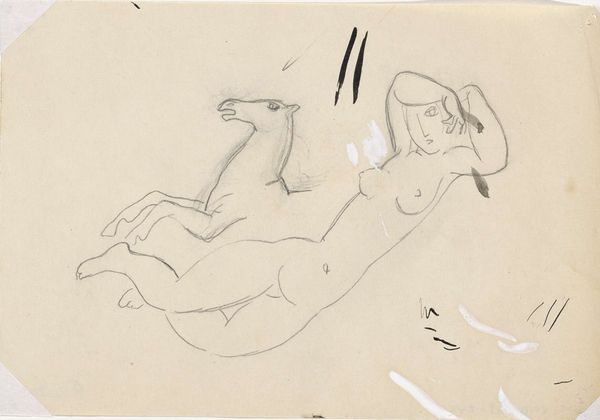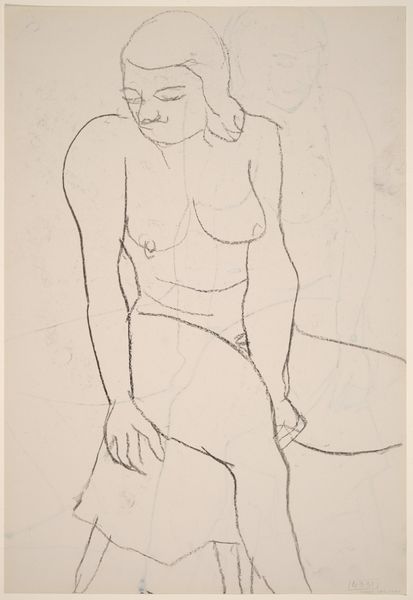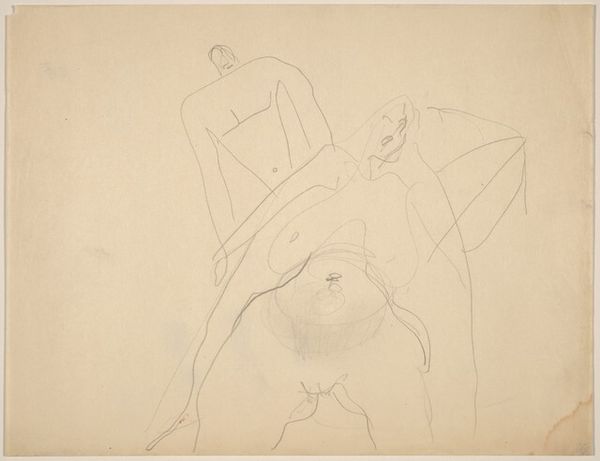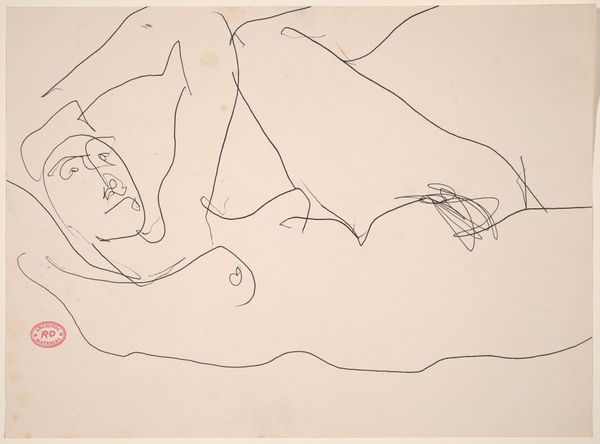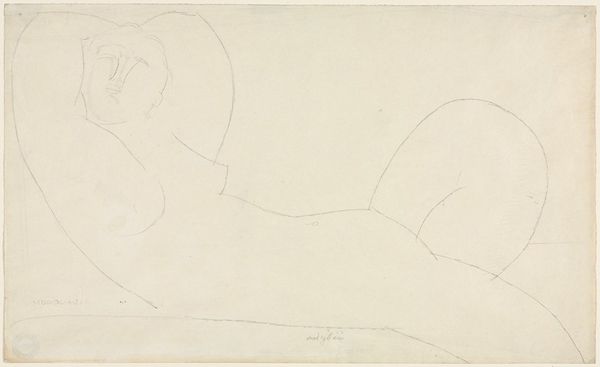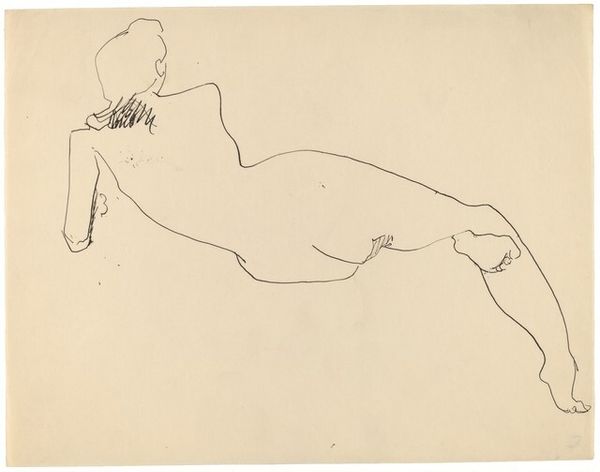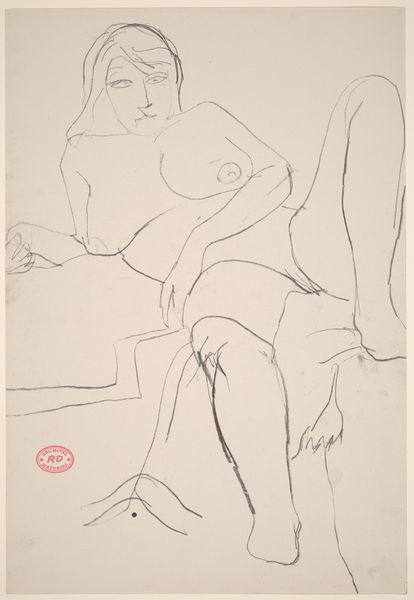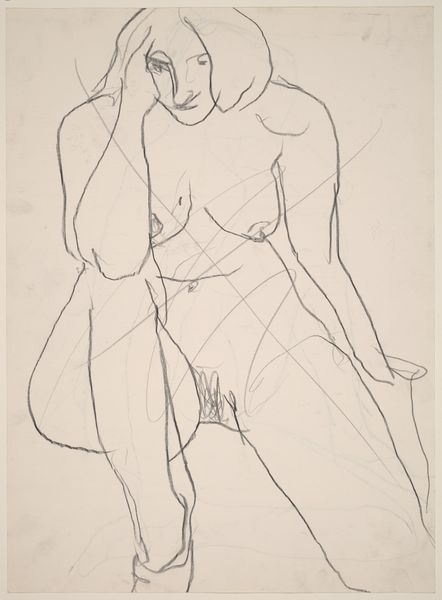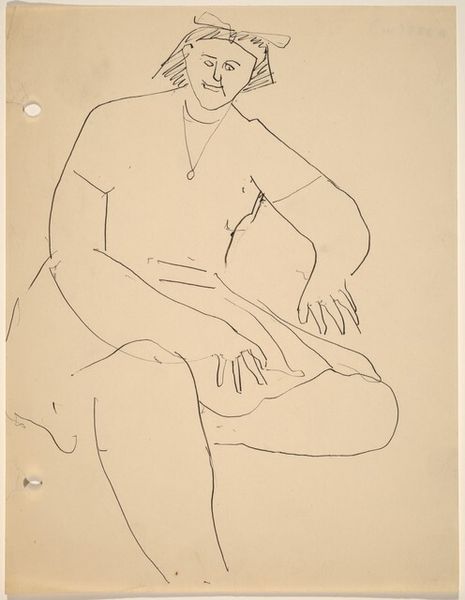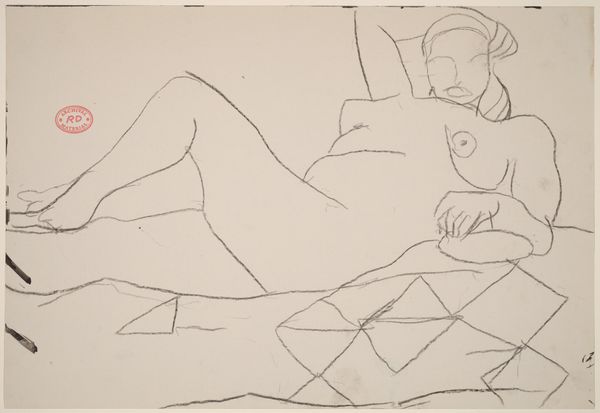![Figue Studies [verso] by Mark Rothko](/_next/image?url=https%3A%2F%2Fd2w8kbdekdi1gv.cloudfront.net%2FeyJidWNrZXQiOiAiYXJ0ZXJhLWltYWdlcy1idWNrZXQiLCAia2V5IjogImFydHdvcmtzL2JjZDUyZGJhLTE4ZDMtNGU2ZC05YzM0LTE2NWQ0NmYwMDQyMS9iY2Q1MmRiYS0xOGQzLTRlNmQtOWMzNC0xNjVkNDZmMDA0MjFfZnVsbC5qcGciLCAiZWRpdHMiOiB7InJlc2l6ZSI6IHsid2lkdGgiOiAxOTIwLCAiaGVpZ2h0IjogMTkyMCwgImZpdCI6ICJpbnNpZGUifX19&w=1920&q=75)
drawing, ink
#
drawing
#
ink drawing
#
etching
#
figuration
#
ink
#
line
#
nude
Dimensions: overall: 20.2 x 25.4 cm (7 15/16 x 10 in.)
Copyright: National Gallery of Art: CC0 1.0
Editor: This ink drawing, titled "Figue Studies [verso]" is by Mark Rothko. It presents two figures using simple, elegant lines. It feels almost like a quick sketch capturing a fleeting moment. What stands out to you about this work? Curator: I'm immediately drawn to the visible labor. The economy of line belies the careful material considerations, doesn’t it? What kind of ink was used? How does the absorbency of the paper affect the fluidity of the line? Consider the societal pressures of the time as well. Nudes were considered academic, but the starkness in the lack of details hints at something…other. Editor: Interesting. So, you’re saying that the material limitations and choices become a kind of rebellion, almost? That simplicity itself speaks volumes? Curator: Precisely! This is not a highly polished academic study. This piece pushes the boundaries of the “proper” use of line and figuration by almost ignoring established, classical traditions of ink drawing at that time, and using the basic necessity of a medium for a much more complicated approach. It isn't just *what* is depicted, but *how*, and *why* Rothko chose such reductive means. Editor: I never thought about the level of artistry in simplicity before, like the labor is masked as minimalism. Now I’m thinking about the cultural implications... Curator: Exactly! It's about understanding the choices Rothko made within the constraints, within the material and social landscape of the art world then. What does that tell us about art production and distribution today? Editor: This makes me appreciate how materials and process are embedded with meaning! It also allows the art to go beyond the simple appreciation of aesthetics. Curator: Agreed. Thinking about process can transform how we approach art.
Comments
No comments
Be the first to comment and join the conversation on the ultimate creative platform.
